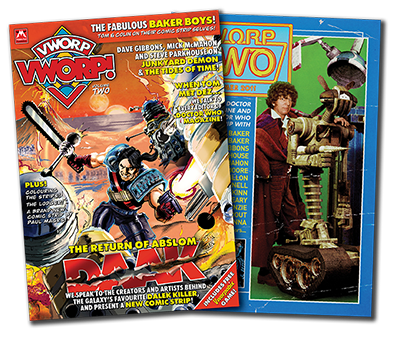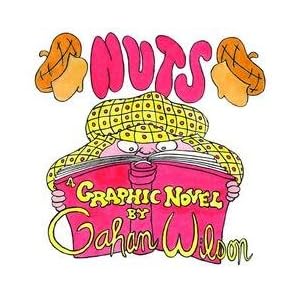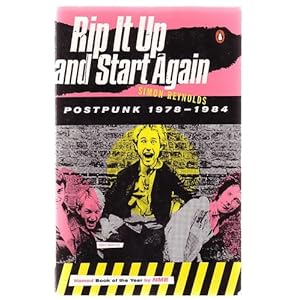
I retain a fascination with late-night talk shows, despite not actually really liking late-night talk shows, but my interest only emerges when there's drama, or when somebody mentions something particularly funny that happened, almost invariably on Letterman or Craig Ferguson. Nobody else seems to ever do or say anything worth comment, except during that ugly period of 2009-2010 when there was lotsa drama and Jimmy Kimmel took Jay Leno out behind the woodshed and whipped the tar out of him, helping make Conan O'Brien a hero and martyr in the eyes of everybody under the age of, say, 47, even those of us with no affection for Conan O'Brien. Boy, that was good TV. Thank heaven for YouTube, otherwise I'd never have seen a minute of it.
See, other than Letterman and Ferguson, I've never liked any of these guys. I've only suffered through their labored, rushed comedy to see a musical guest, and drummed my fingers impatiently or lost focus and opened a book far more times than I've ever laughed. Even at Carson. When I discovered David Letterman in high school, I was amazed that there was actually anything funny on TV that late, because Carson never made me laugh. I have read the tributes and praise for his Tonight Show for years, from writers and essayists and critics and wondered what the hell I must have been watching that was so dull, mediocre and back-slapping instead of this comic genius that they all praise. I mean, I read Mark Evanier, whose taste and opinions I agree with more than just about anybody, speak of Carson so reverently and sadly wish that I could have seen that guy on TV instead of the dull old man that I always saw in middle and high school.
For example: the first time that I encountered this rotten tradition of banishing the musical guest to the final minutes of the program came during a 1990 Tonight Show. I tuned in to see Maria McKee, hoping to get two songs and a couple of minutes of banter between them. Instead, Carson had Alan King on, for no particular reason whatever. King had nothing to promote, nothing to sell, and, critically, nothing to say. It was agonizing, watching these two old men tell anecdotes and war stories without context or reason, and pat each other on the back being insufferable and smug. Then again, I never saw the point of Alan King, either. It was the least funny hour of television ever, and four minutes from the end, Maria did a solo version of "To Miss Someone" and then I went to bed.
So the battle for Carson's seat between the inventive, clever and very funny Letterman and the painfully, painfully unfunny Leno made no sense to me whatever. I only would watch Letterman for a good musical guest, but I could be assured of some amusing TV waiting for the act. Having him on at 11.35 would be nice, as I could get to bed earlier. I still don't know what the hell NBC was thinking, giving Leno that job, but then again, I still don't understand why each man was so in awe of Carson. The incident, reported by Bill Carter in 1992's The Late Shift, makes for amazing reading.
And then everything went to hell again. Leno, despite not being funny to anybody under fifty-five, spent about a dozen years stinking up TV until NBC finally gave him a five-year notice, and let O'Brien know that he'd change timeslots and get The Tonight Show in 2009. It is very, very hard to muster any sympathy for the only people in the United States who get five-year notices, and the only people on television who can be assured of having a show on the air in five years' time.
But there's a moral side to that argument, which I think that Bill Carter addresses very well in The War for Late Night. Sure, O'Brien got to walk away with a $30+ million severance package, but he got screwed out of a dream all the same, and screwed by a network that has not made a sensible, comprehensible programming decision since about 1999. This is a network that rewards the consistent mediocrity of people like Jay Leno and wonders how they can stop being in fourth place behind a rival network that packages seven fewer hours a week than them.
Carter's book is, like the earlier one, rife with stories from "staffers" who declined to give their names to their accounts, and the result seems a little more third-hand than would be ideal, but it's still a breezy and very fun read. He covers, in good detail, all of the memorable and amazing moments of the stupid business of Jay Leno moving to a nightly 10 pm slot. Writers and critics will be torpedoing that idiotic move for decades. We'll remember it as fondly as that time Tim Conway was the guest star on the one-and-only broadcast of the derivative variety show Turn-On in the late sixties, the first time a show had ever been canceled after a single episode. NBC's Jeff Zucker, who somehow came up with this brainless move and all of the attendant dominoes that went down after it, such as the ongoing destruction of the network's ability to package a 10 pm drama, tries to pass himself off as a victim of circumstance who desperately wanted to avoid losing Leno to ABC. Instead, he is shown as relentlessly incompetent, and with good reason. My small audience for my Bookshelf blog may only be a hundred or so people, but every man jack one of you could do a better job programming for NBC than Zucker. This is the man who should have canceled Jay Leno, and not rewarded his 10 pm failure by losing O'Brien.
And Leno? If anybody would ever like to tell me a story where the guy doesn't come across as a desperate-to-please buffoon, I don't think I'll bother reading it. I have seen more than enough of his inoffensive, dated, playing-for-Peoria style of gentle aw-shucks comedy, watched enough of his antics when he got The Tonight Show and when he acted so immoral and so greedy when his damn show should have ended. Anybody looking for an account that contradicts my reading of the record won't find it here. Carter's book is so closely in line with my own feelings that it's entirely possible that he wrote it to my specifications.
One conclusion that Carter makes, however, is one that I had not considered. None of these newsmaking shenanigans or daily revelations or input from Letterman or Kimmel into the trainwreck at NBC ever resulted in a real Nielsen rise for the shows. Certainly, everybody with an ear for the dirt learned that, the night before, something amazing had happened on Kimmel's show, but nobody then tuned in to see whether there might be more fireworks on ABC that evening. Rather, we all read the news and looked at the accompanying YouTube clip, laughed our tails off at Leno's expense, and went onto other things and hit the sack safe in the knowledge that if something unmissable did happen, it would be in our inbox the next morning. In a world where even drama this spectacular and popcorn-ready will not change our TV habits, it's increasingly apparent that there simply isn't a need for high-salaried programming this late. Of course Nielsen ratings are going to keep plummeting no matter who's on TV that late, because we want to go to sleep and we have YouTube. It's even harder to muster sympathy for O'Brien's $30+ million payout when you know that NBC shoveled all that cash to get rid of him in favor of a future where nobody carrying on Carson's legacy is going to compete with, basically, advertising-free highlights on YouTube.
That's where I catch all the musical guests that I want to see, anyway. Look up Company of Thieves playing "Oscar Wilde" on Carson Daly sometime; it's mighty good. The book's recommended. Have YouTube handy to see the events detailed, especially Kimmel destroying Leno on the foolish man's "Ten for Ten" segment, for even more fun.





